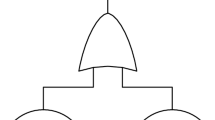Abstract
We know that risk analysis is based on the estimation of catastrophic events. Now to obtain a good estimation we must create suitable model of the risk. With samples of data we can use different mathematical models as linear or non linear regression methods, neural network methods, genetic methods and more recent hybrid models consisting of the information diffusion approximate reasoning method and back propagation neural network. In this paper, we present a new frame-work denoted morphogenetic system to study risk analysis. We show that morphogenetic system is a generalization of the tensor calculus used to formalize the non Euclidean geometrical representation. Now, we take suggestion from the electrical circuit analysis to create the morphogenetic model for the estimation. In the electrical circuit, we have the vector of voltages and vector of currents. The relation between voltages and currents is given by Ohms rule and the impedance matrix. The relation is a multi input and multi output (MIMO) system given a set of samples for voltages and currents we can estimate the impedance matrix of the circuit. Now, we know that the electrical circuit is controlled by a limited set of voltage or current sources. The aim of this papers is to give the rule by which from arbitrary voltages in the circuit we compute the voltage sources and also the associated current sources. We also give the method to compute the currents by the current sources and also the voltages by the impedance matrix. All the process from arbitrary voltages, voltage sources, current sources, current in the circuit and voltage in the circuit is denoted the projection operator in the morphogenetic system. Electrical circuits are a prototype of the morphogenetic system. We show that fuzzy inferential processes can be modeled by morphogenetic systems to improve models to estimate risks.





Similar content being viewed by others
References
Brown CB (1979) A fuzzy safety measure. J Engineering Mechanics 105(5):855–872
Chongfu H, Yong S (2002) Towards Efficient Fuzzy Information processing, Physica – Verlag, A Springer verlag Company
Dong WM, et al (1986) Fuzzy computation in risk and decision analysis. Civil Engineering System 2:201–208
Hadipriono FC, Ross TJ. (1991) A rule bases fuzzy logic deduction technique for damage assessment of protective structures. Fuzzy Sets and Systems 44(3):459–468
Jablonowski M (1994) Fuzzy risk analysis using AI system. AI expert 9(12):34–37
Resconi G (2007) The morphogenetic System in Risk Analysis, proceeding of the 1 International Conference on Risk Analysis and Crisis Response, September 25–26. Shanghai, China Editor Chongfu Huang, Cristopher Frey, Jali Fang
Resconi G, Jain L (2004) Intelligent agents, Springer Verlag
Schmucker KJ (1984) Fuzzy Sets, Natural Language Computations, and Risk Analysis, Computer Science Press, Rockvill Maryland
Author information
Authors and Affiliations
Corresponding author
Rights and permissions
About this article
Cite this article
Resconi, G. Geometry of risk analysis (morphogenetic system). Stoch Environ Res Risk Assess 23, 425–432 (2009). https://doi.org/10.1007/s00477-008-0229-3
Published:
Issue Date:
DOI: https://doi.org/10.1007/s00477-008-0229-3




